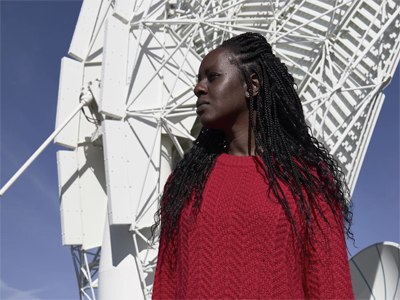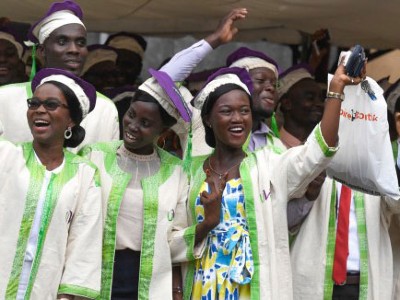
Bernie Fanaroff, at part of the Square Kilometre Array in Carnavon, South Africa, worked to ensure that Black African students had opportunities to become radioastronomers. Credit: Jaco Marais/Foto24/Gallo Images/Getty
When we threw our hat in the ring to host the Square Kilometre Array (SKA), we knew that we had to be very focused in how we spent our money. One of the conditions for government support for the bid, both from the South African government and from the African Union heads of state, was human-capital development on the continent. Back then, there were a handful of radioastronomers in Africa. We wanted to create a discipline here.
In the first year, we had about 40 million rand (US$2 million) to start developing the skills to build and use a pathfinder telescope to show that South Africa had the capability to host the SKA. We did not want to spread the money too thinly and were strict about which projects qualified for support. We started to get very good people, but there weren’t enough Black or female students entering the programme for there to be any kind of transformation at the graduate level. Black people account for more than 80% of the South African population but, historically, astronomers in South Africa were white men. We wanted to change that.
Star-struck: living my childhood dream as an astronomer
In response, we extended our development programme to undergraduate students, but we still struggled to attract Black and female candidates, and so we went further back, to secondary schools. For example, although our scholarship programme offers preferential access to students from the Karoo, the region in South Africa where the telescopes are based, pupils there struggled to meet the university entrance requirements for science and mathematics. So, we relocated specialist secondary-school teachers to the area to create an end-to-end process.
There’s a whole pool of young people out there who are extremely capable but have not had an opportunity to get into science. There are real social and economic barriers for women and for Black students in South Africa.
You can’t expect diverse candidates to appear out of nowhere. You have got to go and look for these people, find them and recognize that, given the circumstances, they have immense promise. Then, you have to take a chance on that person.
If you come from an under-resourced school or previously disadvantaged area, it is difficult to negotiate university — an entirely new environment. Students might have real gaps in their basic learning, but it’s not only that. They often don’t have the confidence, the study skills or the knowledge of university bureaucracy to succeed. A 2019 government study1 found that three out of five less-privileged South African students do not complete their university studies.
Career resources for African scientists
Students have got to feel that there’s somebody there, even just as a psychological mentor. Kim Anthony, head of human-capital development for the South African Radio Astronomy Observatory in Cape Town, and her team have been very hands-on and made a huge difference by simply caring about these students.
We also required universities to show that they had the appropriate people to mentor students. Initially, there were not enough supervisors for the growing pool of students, so we funded five research-chair positions and some mid-career positions, with funds for students, postdocs and start-up costs. That’s been very successful.
Planting the seeds of astronomy
South Africa’s 64-dish MeerKAT telescope, inaugurated in 2018, demonstrated that the country was becoming a hub for advanced radioastronomy, technology and science. MeerKAT, which is one of the most sensitive radio telescopes in the world, will eventually be absorbed into the SKA. It attracted world-leading researchers in science and engineering, and our young people now have access to this telescope and that international expertise.




